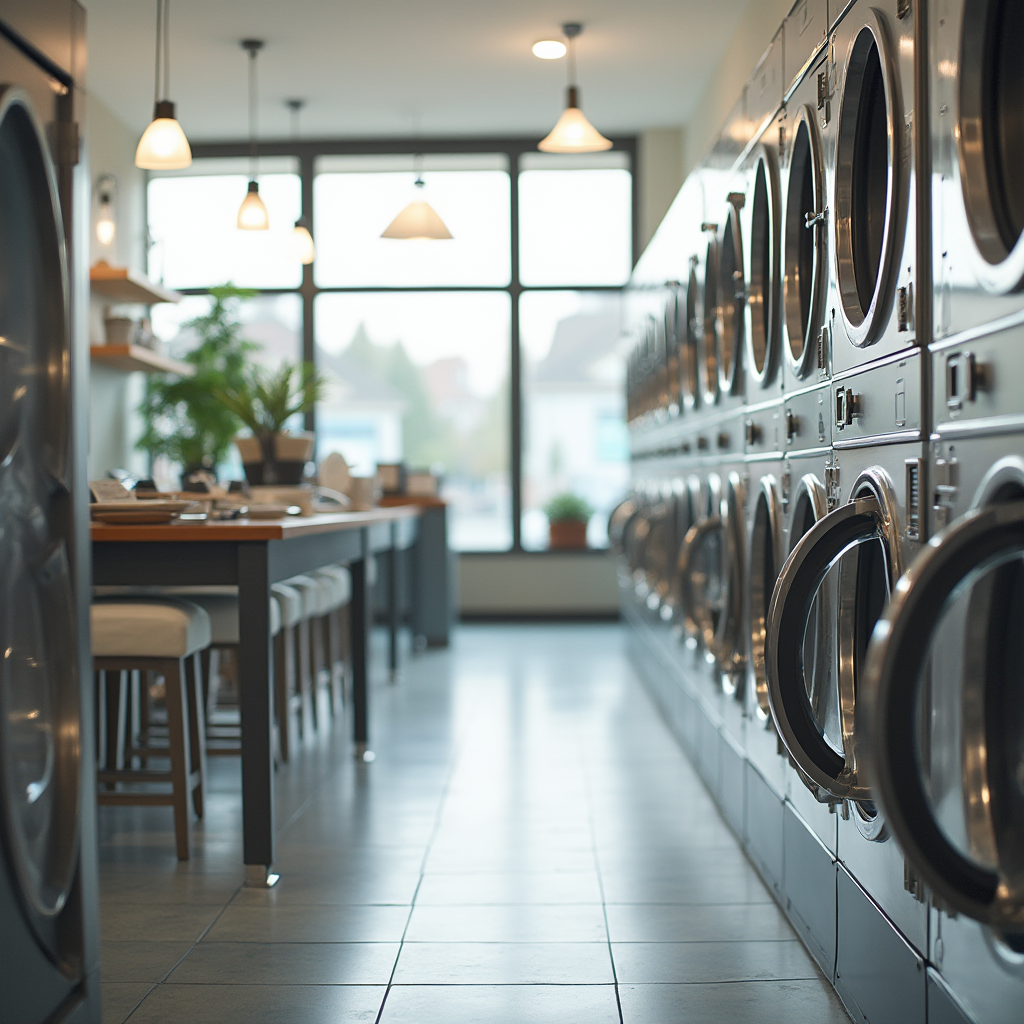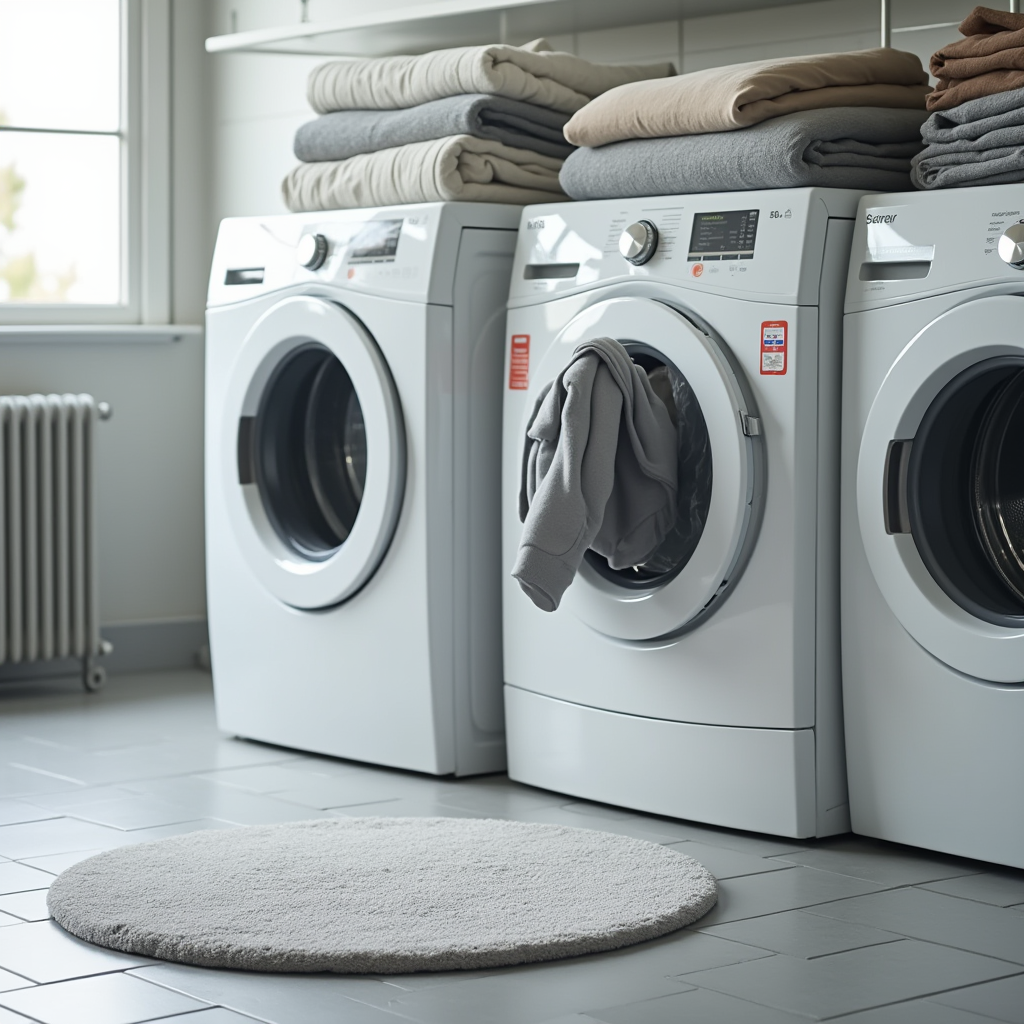Dreaming of owning a laundromat but working with a $50,000 budget? Many budding entrepreneurs ask, Can I open a laundromat with 50k? The good news: it’s possible to start with a smaller budget if you carefully plan each step. While the average laundromat costs between $200,000 and $500,000 to launch, strategic approaches like buying used equipment, leasing instead of buying, or starting with a part-time setup can make opening a laundromat with $50,000 achievable. This guide dives into each cost-effective strategy, outlining everything you need to know to make it work with your budget.
Table of Contents
1. Understanding Laundromat Startup Costs
Typical Expenses in the Laundromat Business
The initial investment for a laundromat includes several major expenses, from location and equipment to licensing fees. Generally, startup costs fall into four main categories:
- Lease or Purchase of a Location: Renting space is often more affordable for small-budget setups, costing about $2,000 to $5,000 monthly, depending on the area.
- Renovation and Build-Out: Transforming a space into a laundromat can range from $10,000 to $30,000, depending on existing infrastructure and any required upgrades.
- Equipment: New machines are costly—between $5,000 and $10,000 per machine. However, used washers and dryers offer a viable alternative, costing 30-50% less.
- Utility Setup: Laundromats require plumbing, electrical, and gas systems tailored for commercial use, which may need professional setup, running $5,000 to $20,000 depending on the extent of installations needed.
These core expenses typically total between $200,000 to $500,000 for a full-scale laundromat, but by prioritizing and budgeting wisely, you can make significant progress with a $50,000 budget.
2. Leveraging Loans and Financing
How Financing Can Stretch Your Budget
If you’re comfortable with leverage, a $50,000 initial investment can go further with financing. By securing a loan for around $150,000 to $200,000, you can reach the average startup cost threshold for a small laundromat. Here’s how financing can work to your advantage:
- Down Payment: With a $50,000 down payment, many lenders may approve a business loan to cover the remaining balance.
- Interest Rates and Repayment: SBA loans, which often offer favorable terms for small businesses, could provide extended repayment plans at lower interest rates, easing the burden on initial cash flow.
- Building Credit: Financing a laundromat is also an opportunity to establish or strengthen business credit, opening up future funding options for expansion.
Before moving forward, assess your ability to meet loan repayments based on projected revenue.
3. Cost-Saving Strategies to Open a Laundromat with 50K
Starting with limited capital requires innovation. Consider these cost-effective tactics to make $50,000 go as far as possible:
a. Buying Used Equipment
While new machines can be expensive, used equipment can cut costs by as much as 50%. Many laundromat suppliers offer reconditioned washers and dryers with limited warranties. Look for reputable sellers and inspect the equipment carefully to ensure it’s in good working condition.
b. Leasing vs. Buying Space
Leasing a location is generally more affordable than purchasing, reducing upfront costs. Start with a smaller, manageable space, ideally under 1,500 square feet, and negotiate lease terms to allow flexibility for potential upgrades or relocation if needed.
c. Starting with Part-Time Operations
Operating a laundromat part-time can help generate initial income without the expense of full-scale operations. Consider opening only on weekends or peak times when demand is highest. As revenue grows, you can gradually expand operational hours.
d. Marketing to Niche Segments
Attracting a steady clientele early on is essential. Target nearby residents, particularly students, apartment renters, and young professionals who may lack in-home laundry facilities. Offering promotions for first-time customers or loyalty discounts can create a stable customer base.
4. Should You Consider Buying an Existing Laundromat?
Pros and Cons of Acquiring an Existing Business
Purchasing an existing laundromat within your budget can eliminate setup costs and simplify the startup process. Advantages include an established customer base, immediate revenue, and functional equipment. However, here are some factors to weigh:
- Pros: Immediate cash flow, pre-installed equipment, and built-in customer loyalty.
- Cons: Potential need for repairs or equipment replacements, existing reputation (positive or negative), and higher down payments.
If you find an existing laundromat listed below $200,000, a $50,000 down payment may be sufficient with financing to make the purchase feasible.
5. Conducting Market Research to Maximize Profitability
Location, Demographics, and Competition
Location is critical in the laundromat business. Choose a spot with a high concentration of renters, students, or young professionals. Ideal locations typically have:
- High Foot Traffic: Areas near apartment complexes or universities.
- Few Competitors: Avoid oversaturated areas to enhance profitability potential.
- Ease of Access: Parking and accessibility are essential to customer convenience.
Conducting market research is an upfront investment that pays off by ensuring there’s sufficient demand to sustain your business. Online tools like Census Bureau data or local real estate websites can provide insights on demographics and income levels in your chosen area.
6. Maximizing Revenue Streams and Upselling Services
Add-On Services to Increase Revenue
Many laundromats increase profits by offering additional services. While self-service is the primary model, add-ons like wash-and-fold, dry cleaning, or vending machines for laundry supplies are profitable extras.
- Wash-and-Fold Services: Convenient for busy customers and can command premium prices.
- Vending Machines: Offering snacks, drinks, or laundry essentials adds a steady side income.
- Wi-Fi and Entertainment: Keep customers comfortable during wait times, enhancing the overall experience and likelihood of repeat visits.
Diversifying income streams makes your business more resilient and less reliant on self-service revenue alone.
7. Calculating the Break-Even Point and Projecting ROI
Setting Realistic Financial Goals
To calculate when you’ll break even, factor in initial investments, monthly expenses, and projected revenue. With a $50,000 starting budget, initial revenue targets will be modest. Track your finances and aim for an ROI that supports gradual expansion.
- Estimate Monthly Revenue: Based on your local customer base, predict the number of customers per day and average transaction value.
- Account for Fixed Costs: Rent, loan payments, and utilities are primary monthly expenses.
- Calculate Variable Costs: These include maintenance, supplies, and any part-time labor expenses.
- Break-Even Timeline: With efficient cost management, a small-budget laundromat could break even within 2-3 years.
8. Common Challenges in Laundromat Ownership
a. Managing Maintenance and Repairs
Frequent maintenance is crucial to avoid machine downtime and customer dissatisfaction. Set aside a portion of revenue for maintenance, and consider warranties or service contracts for older equipment to minimize unexpected repair costs.
b. Dealing with Variable Utility Costs
Utility costs can fluctuate, affecting profits. Using energy-efficient machines helps reduce water and electricity costs, while off-peak pricing or loyalty programs can help mitigate higher costs.
c. Marketing for Steady Traffic
Marketing a laundromat may not seem necessary, but outreach can make a huge difference, especially when starting with limited capital. Consider online directories, social media, and local promotions to drive awareness. Engaging with the community through flyers or loyalty programs can build a strong customer base.
Conclusion: Can You Open a Laundromat with 50K?
Opening a laundromat with $50,000 is possible with strategic planning, careful budgeting, and a willingness to start on a smaller scale. By leveraging used equipment, financing options, and a smaller location, you can establish a profitable business. Although it may take a few years to reach full profitability, the laundromat business offers a steady, recession-resistant revenue stream that’s well worth the effort. With the right location and services, you’ll be on your way to becoming a laundromat owner on a budget.










